Estimated reading time: 5 minutes
If you’re growing your own fruit, you probably don’t want to spray your fruit trees with any chemicals that could damage your crop, your family, or the environment.
The idea of “spraying” is often linked with nasty chemicals. And for very good reason. Less than 2% of the world’s food is produced organically. That means the other 98% is grown with chemicals.
Related Articles
Should you spray your fruit trees in autumn?
Spraying fruit trees should always be kept to a minimum to protect soil health, but sometimes a spray in autumn is the right thing to do.
Natural fertility for fruit trees in Autumn
Autumn is a great time to apply some natural fertility to your fruit trees before they go to sleep for the winter.
Noticed any brown rot in your stone fruit?
Brown rot in your fruit can be devastating, but it is preventable with the right knowledge, understanding, and equipment.
A huge part of the appeal of growing food at home is that you know (without a doubt) it’s healthy.
Agricultural chemicals may be regulated, but they are definitely not natural. Prior to the early 20th century, food was grown successfully for thousands of years without them.
Spraying food with chemicals poses many risks that you can’t control:
- Is the chemical actually safe, or is the ‘safe’ level influenced by industry lobbying?
- Are growers sticking to the safe levels? (Outside the organic industry this is rarely monitored.)
- Has imported food been grown using chemicals that are banned in Australia? (And again, who is monitoring this?)
- Are agricultural chemicals affecting human health in ways not yet discovered?
Being organic doesn’t mean not spraying
Wanting to avoid nasty chemicals doesn’t mean you don’t spray at all.
All deciduous fruit trees are prone to fungal diseases, some more than others. If the diseases are not properly prevented or controlled in spring, they can be devastating.
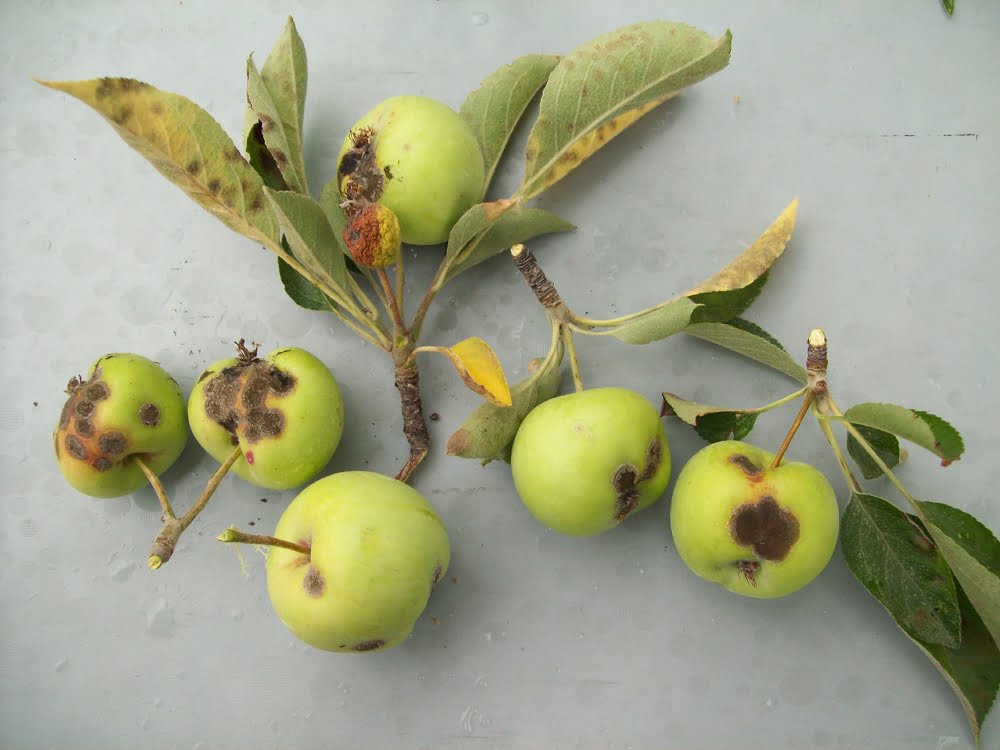
In this post, we won’t be going into detail about individual diseases (learn about leaf curl here and find out how to prevent fungal diseases here).
Instead, we’ll focus on the basic principles of fungal disease prevention. The same principles apply to pretty much any fungal disease your fruit tree is likely to get.
What causes fungal disease in your fruit trees?
Each fungal pathogen has trigger points that stimulate an outbreak of disease. They are a unique combination of:
- temperature,
- the number of hours the tree has been wet, and
- the amount of spores present.
Regardless of the disease that you’re trying to prevent, the aim is to keep your trees protected at all times while they’re flowering with what we call a “cover spray”
This means you’re aiming to have the trees covered with something that will prevent the fungal spores from causing a disease outbreak.
The regime differs a bit depending on what disease is posing a risk, but the same principles apply.
- Put an organic fungicide spray on,
- If you’ve had a lot of rain (more than about 25mm, or consistent rain for days on end) assume it’s been washed off and replace it.
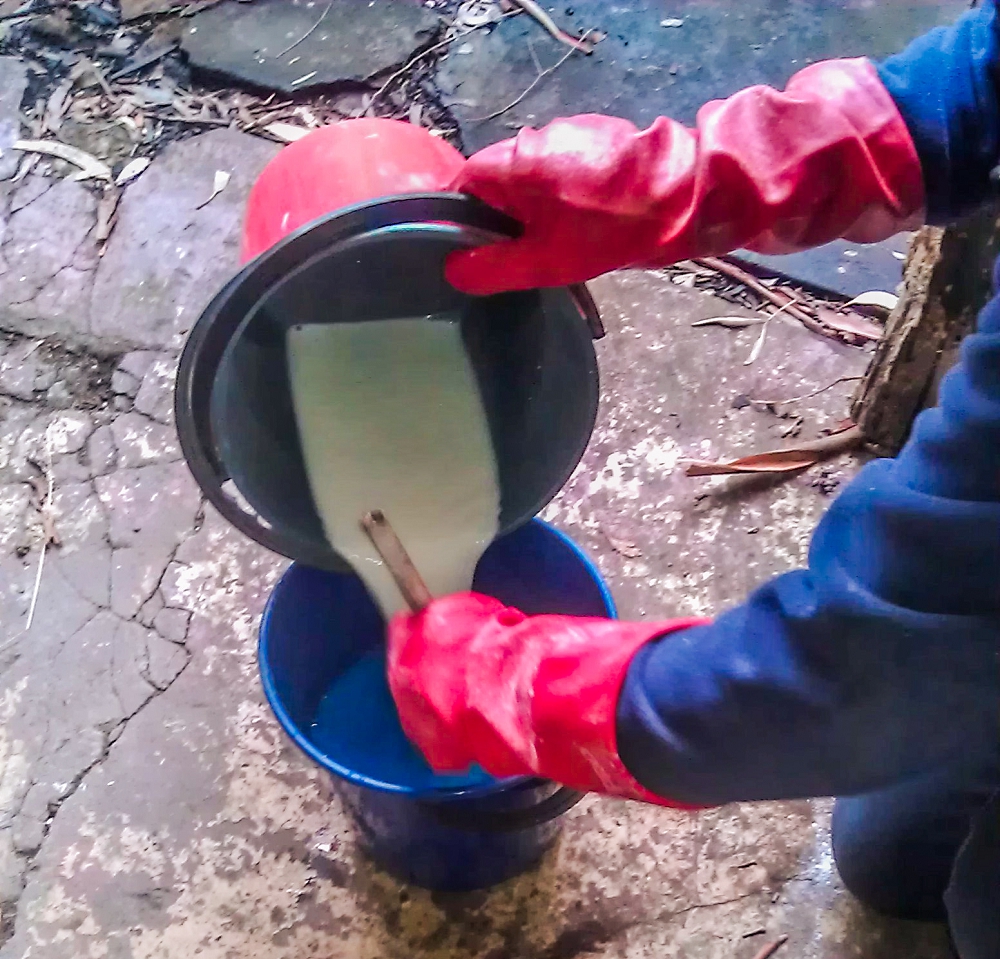
What should you spray your trees with?
In an ideal world, the tree’s natural defense system (including naturally occurring microbes on the leaves) would prevent a disease outbreak. Unfortunately, for most of us who live in the real world, our trees still need some protection.
An effective spray available to organic growers is copper. This is often used mixed with builders’ lime to create ‘Bordeaux’ spray.
However, as always, it’s important to consider the pros and cons.
Copper is such an effective fungicide that it can have quite a detrimental effect on the soil by damaging soil fungi. Healthy soil fungi are actually vital to the health of the soil and your trees.
So, the compromise we recommend is only ever to use copper once or twice a year.
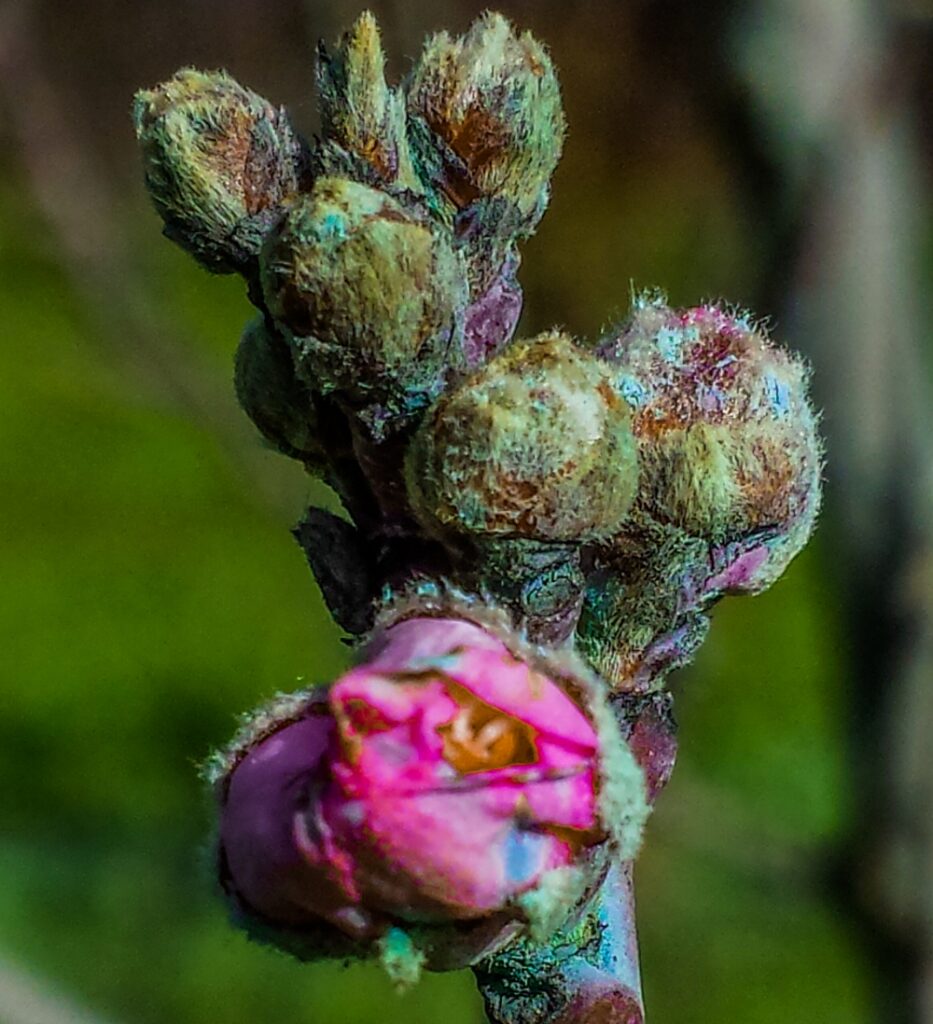
Another spray you can use in organic orchards and gardens is wettable sulphur. This is much ‘softer’ and less damaging to the soil, but also less effective at preventing outbreaks of disease. It’s likely to get washed off by rain more easily though, so it may need replacing more often.
Trialling new organic fungicide sprays
Whey is another spray that is often recommended for organic fruit trees. We’ve not used it ourselves and it’s hard to get any good data about its effectiveness.
If you plan to use whey consider doing some ‘citizen science’ and keeping good records. Take photos, and make notes of what you use, when you use it, and your results. Please send them to us – we’d love to see them and share any new-found knowledge.
On a side note, a member of the Australian Network of Organic Orchardists (ANOO) reported on a trial in his orchard. He sprayed with potassium silicate and potassium bicarbonate to prevent Black spot fungal disease in apples. The results? Almost total failure!
So be warned, if you’re trialing an unproven product, set up a small controlled experiment rather than risking your whole crop.
Related Articles
Should you spray your fruit trees in autumn?
Spraying fruit trees should always be kept to a minimum to protect soil health, but sometimes a spray in autumn is the right thing to do.
Natural fertility for fruit trees in Autumn
Autumn is a great time to apply some natural fertility to your fruit trees before they go to sleep for the winter.
Noticed any brown rot in your stone fruit?
Brown rot in your fruit can be devastating, but it is preventable with the right knowledge, understanding, and equipment.

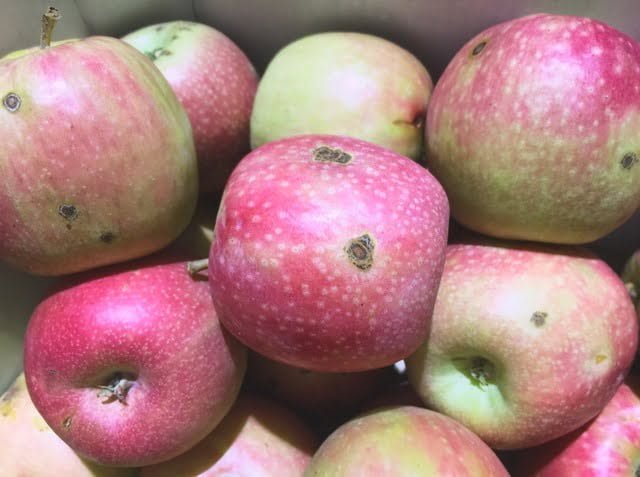
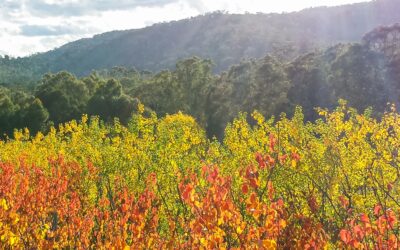
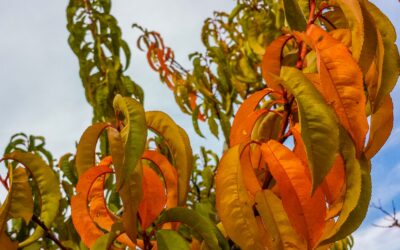



Hugh and Katie, I really love and appreciate your helpful advise. I am new to the field of fruit growing. Have removed lots of useless shrubs and replaced with an apricot, nectarine, peach, fig, 2 apples, 2 cherries, an almond, a pineapple guava and a strawberry guava and a pear tree. I already had a lemon. Orange, mandarins and banana palms. Not bad for a normal sized suburban block in Chelsea! I look forward to your useful blogs each week which walk me through my learning process. Keep up your good work.
Hi Dorothy, glad you’re finding our tips helpful, and what a great orchard you’ve got going there. Hope you have a fruitful season.
Hi Hugh,Katie
Thanks for your very important info. I am new to my suburban Orchard and very uneasy about sprays. Your post relieves the now unsertenty. Just one question” I wad so hesitant with the spray when in flower bud, my necterine is now in fruit a size of grapes, is it to late to spray? I live north of Brisbane.
Kind regards Tania.
Hi Tania, yes too late to spray to prevent Leaf curl once the tree has fruit – you either have it, or you don’t (for this season). If you don’t have it this season that’s great, you may not have a lot of pressure from this particular disease in your district. All the best with your orchard!
Hi Katie, When you say, “spray at bud swell”, do you mean before the flower buds open? Or after flowers opened but before leaves appear?
Also, the kangaroos ate all the leaves & broke a lot of the branches from my one and only Apricot tree (probably about 5-8 yrs old) last summer and the poor tree looks almost dead…with one lonely bunch of leaves on one of the higher branches! What can I do to save this tree from dying completely? Many thanks. Mary Ann
Hi Mary Ann – “budswell” means before the flower buds open, just when they’re tarting to obviously swell. Re the kangaroo tree (a very common problem around here too), it’s probably best to prune it right back to try to re-establish new branches growing from lower down in the tree – just check under the bark to make sure the branches are still alive before you cut them back (it should be green, not brown). And then put a sturdy cage around the tree (e.g. star pickets and chicken wire) to stop the kangaroos from giving it a hard time while it grows back!